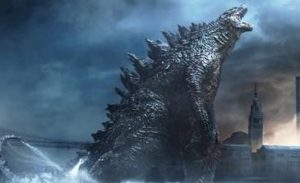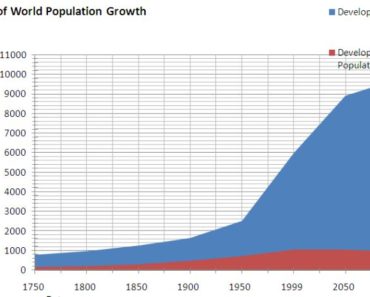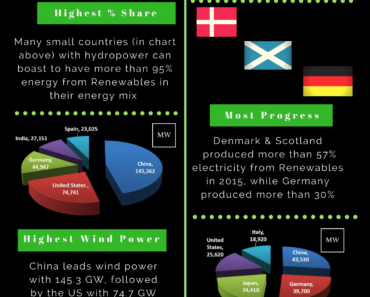The character of Godzilla has entertained audiences worldwide. It has been featured in over 30 movies and also made multiple crossover appearances. Most notably, Godzilla has been showcased in brawls against King Kong and the avengers from the Marvel comics.
The fictitious giant monster was conceived in Japan, where it is known as “Gojira”. The character first appeared on screen in 1954 and was a metaphor for the destruction caused by atomic bomb. Since its first appearance, it become a pop cultural icon and has regularly featured in movies , comics and animations. Over time, the character of Godzilla has evolved and its scale has increased. Despite its destructive abilities, its role has been both of antagonist and protagonist. Parking aside its cinematic appeal, let’s dig down the science of Godzilla and analyse, why the monster could not exist in real life? But before that let’s have a look at its origin.
Godzilla in comics have been shown to have been ancient aquatic creature that has mutated because to exposure to radioactive waste. It has evolved not only to withstand radioactivity, but in fact feeds of it. Now the first striking thing about Godzilla is the giant size. The latest version of Godzilla (2016) shows it to be 118.5 meters and weighing 120,000 tons. Just for comparison, the empire state building is 381 meter in height, and weighs 365,000 tons. The building is three times the height and almost three times the weight. Which brings us to the question, would a threefold increase in Godzilla’s height result in three-fold increase in its weight? Think about this.
Even with its existing weight, if Godzilla walked on solid earth , there would me many places where the ground would giveaway based on the concentration of weight. These skyscrapers after all have very deep foundations.
Let’s come back to the question of scaling of weight. Assume a 13 ft or 4 m tall African Elephant that weighs 7.5 tons. If we double the scale of the elephant, that is make it a 8 m tall elephant, would its weight be 15 tons? The answer is no. The weight would be actually 60 tons. Why is that? It is because, if we double the scale, the weight increases 8 times. The weight is dependent upon the volume. Doubling the scale means we are doubling of height and the width and the length of the elephant. Weight increase has a cubic relationship with the increase in scale.
The bone structure therefore to support that amount of weight has to change. The reason is that the cross-sectional area of the bone is the critical dimension that determines the stress in the bones. When we scale up and animal hypothetically, the bone area increases with a squared factor. While mass increases by a cubic factor. Hence the proportional increase in bone size would not be able to sustain the increase in weight.
Furthermore, the animal will be extremely slow-moving as its high inertia would mean huge amount of energy required to change its state of rest or motion. And that is true, In nature, we don’t see high agility, speed and manoeuvrability in larger animals. Only in the smallest of animals fishes, insects and hummingbirds do we observe the capability to change direction quickly or accelerate rapidly.
However, when Godzilla takes to water, the same inertia gives it a definite advantage. To understand this advantage, we have to learn something called the Reynolds number. When any object is moving through a fluid, the viscosity of the fluid tends to resist its motion. Reynolds’ number is simply the ratio of Inertial force to viscous force. The larger the object is and the less viscous the fluid is, the easier it for the object to flow through. Blue Whales can achieve Reynolds number of 4 x 10^8. For Godzilla, the Reynolds’ number would be an order of magnitude higher. The speed Godzilla can achieve in water has been reported in the movies to be 40 miles or 17 meter per second. That means a Reynolds Number of almost 2 X 10^9.
For example, a tiny insect when it tries to tread through water, the water’s viscosity becomes a huge obstacle that it has to overcome. The Reynolds’s number in case of the insect is << 1. Think about a person that is trying to swim and water and now think about a person that is trying to swim in honey. You can appreciate, that the effect of viscosity as a resistance to motion. So the insect trying to navigate through water would feel the same resisting force as us humans trying to navigate through honey or thick oil.
With Godzilla that effect of resistance is minimal or we can say that water feels a lot thinner to Godzilla than it would do to most other animals. The scale of the monster also suggest the requirement of huge amount of energy. This energy has been suggested in the movies to come from nuclear fission and omnivorous diet. In the most recent Godzilla instalment, it is said to be a walking nuclear plant and the giant fins at the back are meant for cooling.
Science suggests that the size of an animal is dependent upon several factors. This includes the availability of food and space or habitat. The biggest land animals are the African elephants that can get up to 7.5 tons in weight. To keep themselves fed, they can travel up to 80 miles a day. A Blue Whale similarly that can weigh 200 tons is the biggest animal on the planet and can travel thousands of miles to traverse its feeding territory. It can travel 455 kilometres a day.
There is a law that predicts the energy required by any organism based on it weight. It is called Kleiber’s Law
E = 70 M^ ¾
Based on Godzilla’s weight of 120,000 tons, the amount of calories required would be 80,257194 calories everyday to sustain itself. It would have to snack on whales and great whites to meet that goal. Therefore it is somewhat accurately convenient to suggest that Godzilla can feed-off radiation. It should be remembered that the energy density of Uranium is 80,620,000 MJ/kg. So it is easier for the monster to feed on pills of nuclear material rather than forage over large areas.
So to conclude, if Godzilla were to exist, it has to have bones of metal and a diet that is nuclear. The monster would be better off staying in Water rather than making a landfall, where it would struggle to crawl let alone walk on both feet. Even if the adamantium metallic bones are able to sustain its weight, the ground in many places would not.
If you find this article interesting, please fee to share it.







